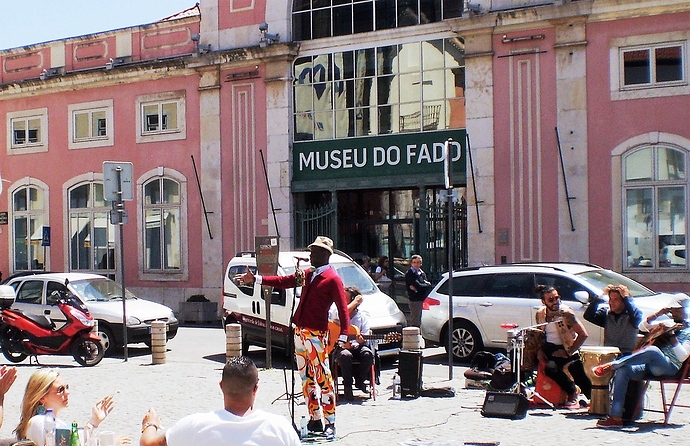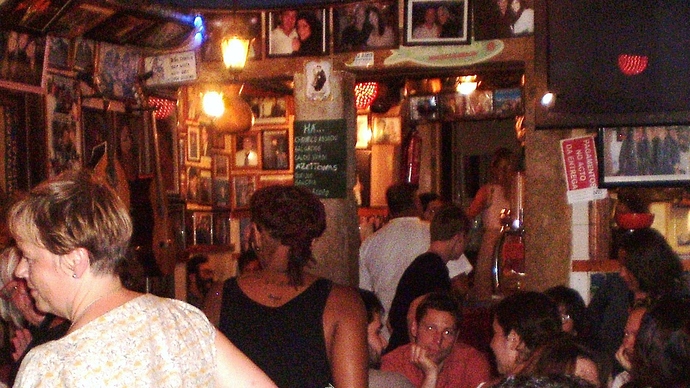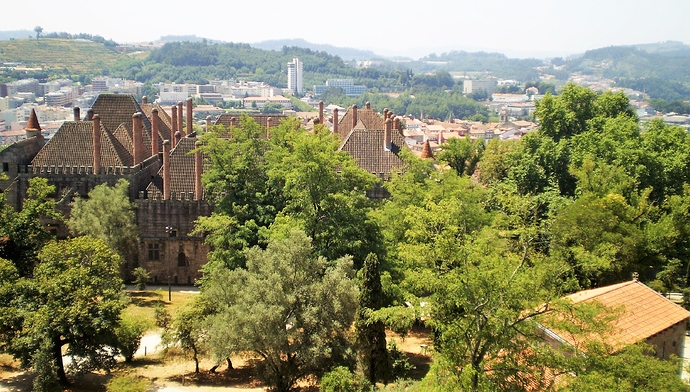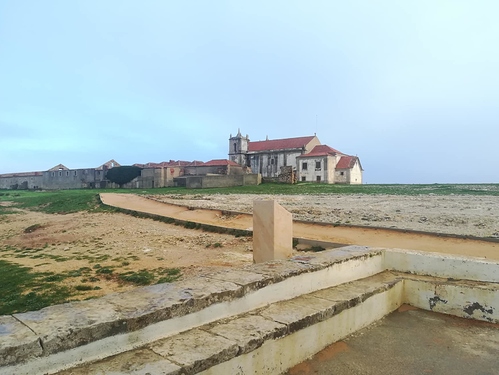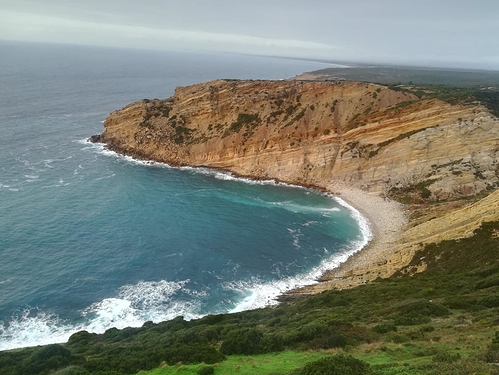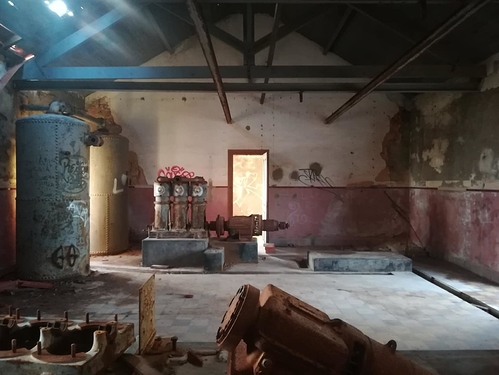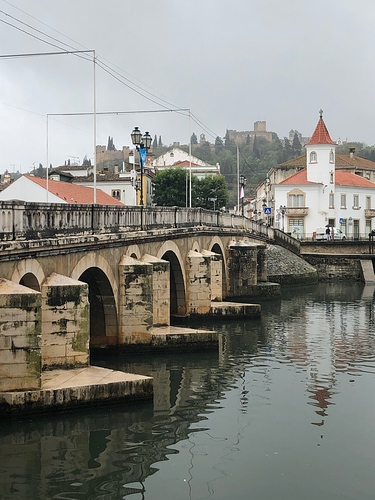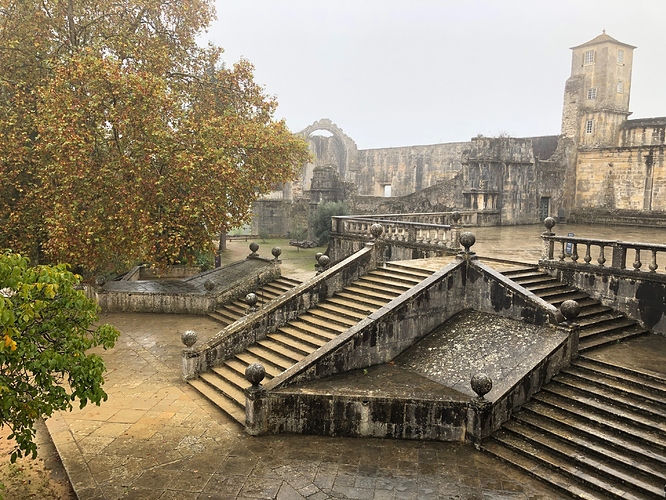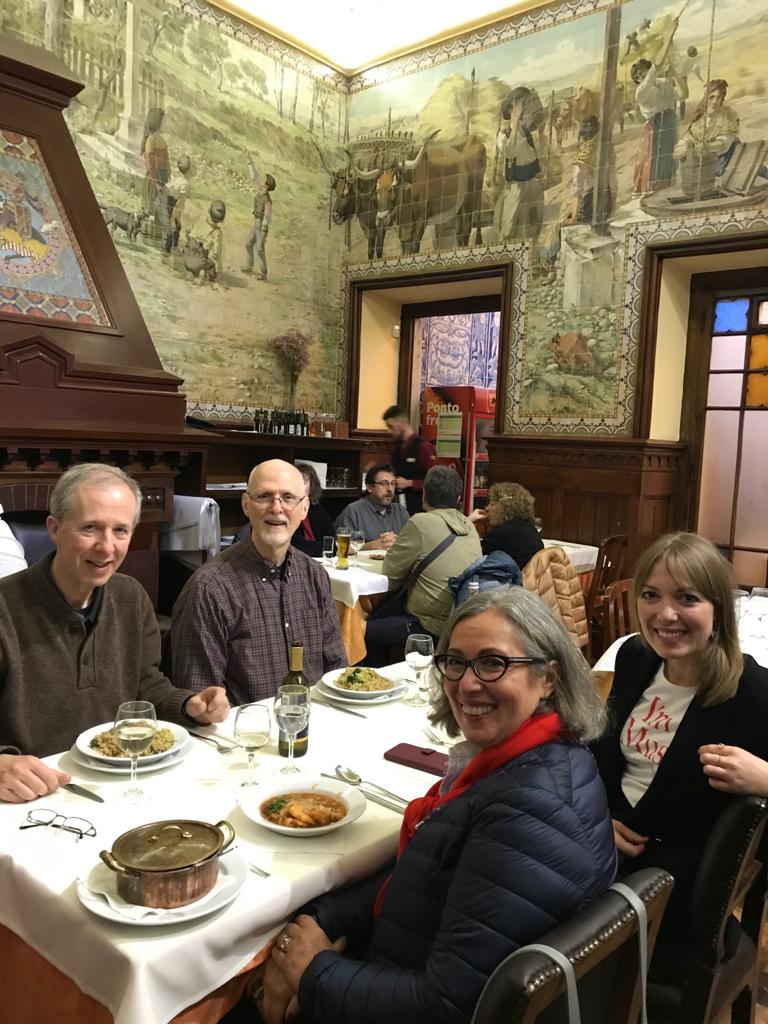I had a good Francesinha at Tasquinha do Bé in Porto. Can even get it gluten free. Over near São João Novo, corner of Rua das Tiapas and Rua de Belomonte. Beware though. very filling.
Thanks for the heads up
I’ve been doing my homework on the best in Porto and there’s a place in Braga that comes highly recommended. Alas it’s so good it’s always busy and quite noisy.
Reddit/Portugal is a good source of info for best place for Franceshina in Porto
In fact I asked the question; how do you say ‘stodgy’ in Portuguese to describe my experience.
I did get an answer but can’t recall the word.
Loved Sítio not so much downtown Nazare.
My favourite photograph and story
Sítio in Nazaré
The Sítio district, at the town’s highest point (accessible by a funicular), is without doubt the best viewpoint in the area.
The legend goes that one misty morning in 1182, local nobleman Dom Fuas Roupinho was hunting and realised at the last moment that he had in fact chased his deer to the very edge of the cliff. Just as he too was about to fall to his death, he cried out to Our Lady of Nazaré who appeared before him and halted his horse. In honour of this life-saving miracle, Roupinho ordered a chapel to be built. Over the years it has attracted many pilgrims and today visitors can still see the tale depicted in hand painted azulejos and even the supposed footprint of Roupinho’s horse engraved in a stone found in the crypt below the chapel.
The chapel referred to is in the background of the shot
Thanks for sharing the story!
Listening to Fado was a driver for me in going to Portugal.
Alas my shot at Tasca do Chico in the Bairro Alto is not the best.
I can also recommend the Fado Museum in the background of the first picture. They have an extensive audio library of fado recordings (and provide headphones to listen to it) and go through the whole history of the genre 
Thought it was about time to post another photo.
This one needed some research before commenting since when I viewed the The Bragança Palace from I seem to recall it was the castle in Guimarães and questioned, “Why so many chimneys,” I was told Salazar had a thing about chimneys. Could be?
“During the Estado Novo regime, a controversial restoration restored the Palace, while implying a grandeur that may not have existed. The Palace of the Dukes was classified as a National Monument (Portuguese: Monumento Nacional) in 1910, and has been an official residence for the Presidency.” (Wikipedia)
I’ll also post some photos from last weekend. These were taken in Cabo Espichel, Sesimbra. My photos are terrible, but the place is beautiful!
There’s also an abandoned something over there.
Joseph.
O edifício na distância e aqui no link, Precisa de um pouquinho de restauração!! Não para mim!!
Mac
Sim, é esse mesmo! Está abandonado e danificado - podes ver o interior na minha última foto. Eu acho interessante explorar espaços assim e imaginar a sua história.
Eu também.
The river in Tomar with the Templars Castle on the hill, and a few photos from the Convento de Cristo (at the Castle). I was in Northern Portugal for two weeks in late October. Tomar was a place I really enjoyed, small enough to walk everywhere, uncrowded, interesting history and architecture, great food.
@j1711, I love Tomar, I find it very charming. Looks like you had to put up with some rain, though!
Yes, plenty of rain, but that is a characteristic of northern Portugal and Galicia in the fall and winter. If you read Saramago’s Viagem a Portugal you will find that he had the same experience of rain. Obrigado.
Oh, yes, no doubt. Tomar is still considered central Portugal, actually, but we’ve had lots of rain throughout the whole country lately. Par for the season 
Thanks for the heads up on Sesimbra. Must add to my bucket list and remember to buy the ‘energy bars’
Farinha Torrada (Toasted Flour)
A visit to Sesimbra cannot end without tasting its most typical sweet: Farinha Torrada. A family tradition, “Farinha Torrada” is associated with the fishing activity, as it was taken to sea by fishermen some considering it the “energy bar” of seamen. It is made of flour, chocolate, sugar, lemon and cinnamon and its appearance consistent and shaped like a cube or rectangle. The City Council registered the brand and recipe and Farinha, made the traditional way, can be found at many local establishments.
A few photos from our recent visit to Lisboa.
Amazing design of the MAAT (Museu de Arte, Arquitetura e Tecnologia).
Castanhas assadas vendors–something we don’t usually see in the US, but which we love!
Casa do Alentejo restaurant dinner! The tiled walls were incredible! And this was just one small dining room of a very large traditional Portuguese restaurant.
Os photos sao bons.Obrigado David.
Especialmente os azulejos…mas este não é um restaurante de verdade português…não tem uma TV em cima da frigorifica mostrando futebol!!
Hey - I ate there on my last trip as well!
Muito giro, @stephencanthony! Did you enjoy it? Luckily, they had one vegan quinoa dish. The non-vegans had um prato de camarão e um prato de bacalhau. It’s a huge place, isn’t it? 

